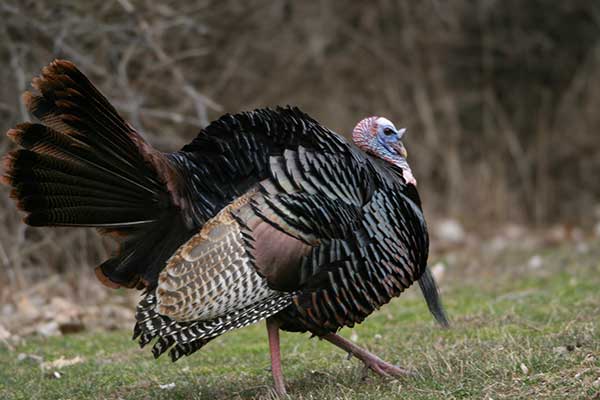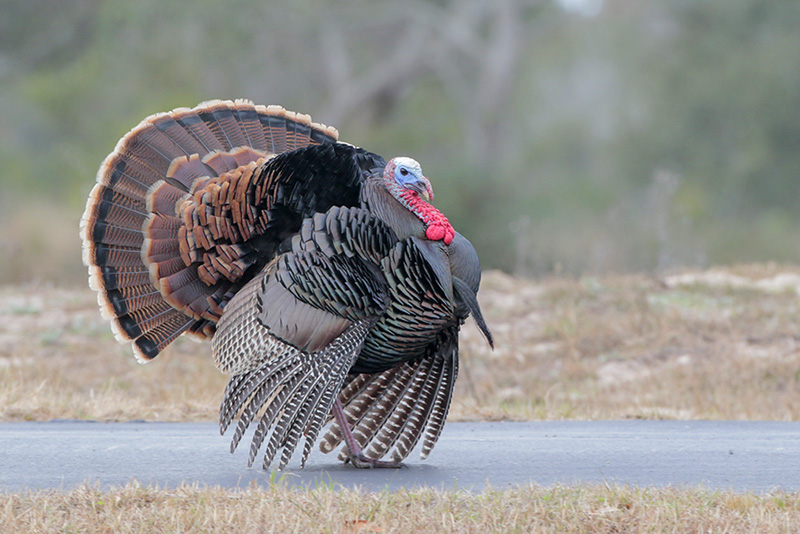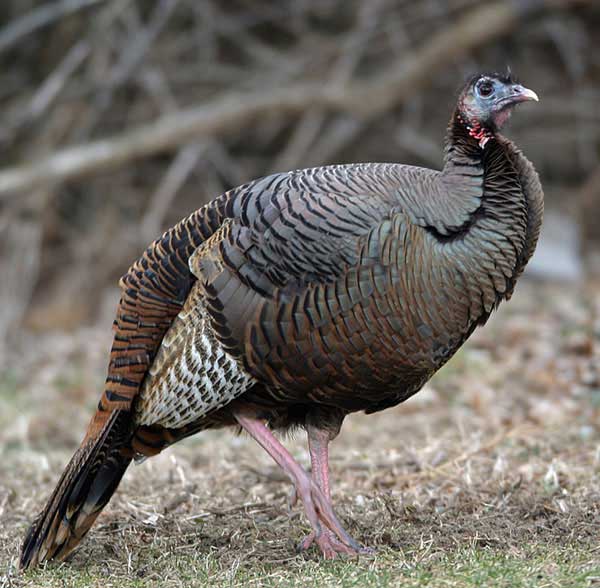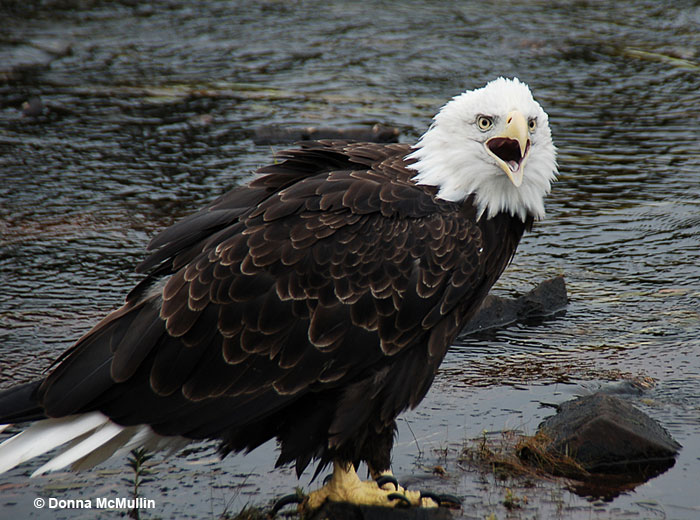
As a large and tasty game bird, the Wild Turkey was at one time overhunted, and much of its habitat was lost. It became quite rare for a time, but better regulation of hunting, better habitat management, and extensive reintroduction efforts have combined to make the Wild Turkey abundant today, even in areas where it was not historically common.
You may have heard that Benjamin Franklin would have preferred the Wild Turkey to be America’s National Bird instead of the Bald Eagle. But have you heard these Wild Turkey facts?
On this page
- 1. The Wild Turkey is actually named after the country Turkey.
- 2. Wild Turkeys are quite a bit different from their domestic cousins
- 3. The distinctive wattle on a Wild Turkey serves two purposes.
- 4. Jakes & Jennies, Toms & Hens
- 5. Group of Turkeys
- 6. Turkeys are widespread in the United States
- 7. Turkeys have 5,000 to 6,000 feathers
- 8. Turkeys can fly
- 9. The fight with the Bald Eagle
- 10. The symbol of Thanksgiving
1. The Wild Turkey is actually named after the country Turkey.
Europeans mistakenly thought the turkeys they saw in America were Guineafowl, which had been imported from Turkey and were called turkey fowl. These days, meat from domesticated turkeys is served around the world.
2. Wild Turkeys are quite a bit different from their domestic cousins
Domesticated turkeys have been bred for meet production and have lost the ability to fly. Wild Turkeys, on the other hand, are pretty good athletes. They can run up to 25 mph (faster than Usain Bolt over a full 100 meters) and fly up to 55 mph, although for relatively short distances.
Related: Ugly (or unfortunate-looking) species
3. The distinctive wattle on a Wild Turkey serves two purposes.

It is used both to help cool the turkey on hot days and as a display to attract females. The wattle and top of the bare head of the male changes colors depending on its disposition at the time. It can change from red to almost white to blue, depending on its level of excitement, stress or aggressiveness.
4. Jakes & Jennies, Toms & Hens
Baby turkeys are able to walk around and feed themselves within 24 hours of hatching. This is an impressive feat, considering most baby birds are completely helpless for the first few weeks of their lives!
Interestingly, even the young birds have their own names – young male and female turkeys are called jakes and jennies. Adults are referred to as toms and hens (or just males and females).
5. Group of Turkeys
Turkeys are social creatures, and they often flock together for a few different reasons. The most obvious one is protection – safety is in numbers. Other vulnerable species, like geese, adopt the same techniques.
Wild Turkeys can even form groups reaching into hundreds of birds. Depending on what they are doing or if they are old or young, these groups can be called differently.
For example, they can be called a gang (group of young male turkeys that sometimes gang up on older males), a brood (for mother and her babies), a posse (for a group of turkeys who seem to be up to no good). There’s even a saying for turkeys who are unknowingly waiting to be sacrificed for Thanksgiving dinners – a death row.
A group of wild turkeys is called a flock, a group of domesticated turkeys is often referred to as a rafter.

Female Wild Turkey. Photograph © Sam Crowe
6. Turkeys are widespread in the United States
Wild Turkeys are found in pretty much every state except for Alaska and Hawaii, and they are found in Mexico and some southern parts of Canada. There are an estimated 6-7 million Wild Turkeys in the U.S.
7. Turkeys have 5,000 to 6,000 feathers
Turkeys have lots of feathers, and to be hones, this shouldn’t come as a surprise – with their hefty bodies and elaborate displays, it’s only natural that they have a lot of them!
8. Turkeys can fly
Wild Turkeys look huge and are often grounded, so it’s a common misconception that turkeys can’t fly. It’s quite the opposite though – turkeys can fly and are especially powerful when it comes to covering short distances.
Turkeys usually fly to protect themselves from danger. When they see a predator, their survival depends on getting away from danger. Wild Turkeys also spend the night roosting on trees.
9. The fight with the Bald Eagle

Benjamin Franklin, one of the Founding Fathers, preferred turkeys over Bald Eagles. This wasn’t in the sense of choosing them as the National Bird, but more of a moral ground.
In a letter to his daughter, Benjamin Franklin called the Bald Eagle “a bird of bad moral character.” He called the turkey “a bird of courage,” and “a true original native of America.”
Related: What do birds symbolize?
10. The symbol of Thanksgiving
Turkeys have turned into the symbol of Thanksgiving. People all over the world know us for this trait, but how much turkey do we actually consume? Nearly 46 million turkeys find their way to the so-called death row.
These birds are grown from the start with one purpose in mind, and are usually just a few months old by the time their hour comes.
But how did they become the symbol of thanksgiving? The answer is simple – there were many of them. Additionally, turkeys were not as valued as cows or pigs, and were easier to slaughter. By the 19th century they had become quite common dish to serve on these occasions.

